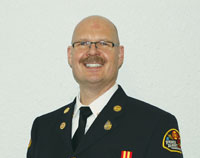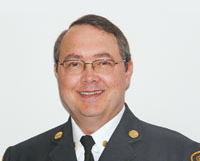
Features
Leadership
Leadership Forum: September 2012
First and foremost, we want to acknowledge that the fire service is an important part of any community.
September 7, 2012
By Les Karpluk and Lyle Quan
First and foremost, we want to acknowledge that the fire service is an important part of any community. In fact, we believe the fire service often forms part of the core values and culture of many, if not most, communities in Canada.
Our profession is proving to be a nimble and adaptive creature that has demonstrated its desire to foster safety and explore more efficient and effective methods of delivering a critical service to the citizens we serve. The intent of many of our columns is to send a message about the elephant in the room that may affect our ability to meet the needs of the profession, the community and our staff. For this column, we thought it would be worth discussing a service-option challenge that many fire chiefs face.
In a previous column, we discussed how the landscape is changing for the fire service. This change is not related just to new technology or how we deal with the challenges of the generation gaps in today’s workforce; the landscape is also dramatically changing because of budgets and other economic pressures. So what does this have to do with municipal fire services? Plenty.
Let’s be honest and acknowledge that the days of abundance are gone, as are the days of huge raises and increases in benefit and retirement packages. This elephant is here, standing right in front of us, and if we don’t acknowledge it, well, it’s just going to step on us. Today, we hear from fire chiefs all across Canada who worry and wonder if they can keep their response vehicles fully staffed, or if they will need to take a serious look at peak staffing, reducing the number of firefighters on response vehicles or the number of response vehicles themselves, or even increasing staff by bringing in a larger volunteer (paid on-call) contingent. This last option may be the one to embrace for many departments in Canada.
Many small and large fire services in Canada and the Unites States have had to amalgamate their borough and township fire departments into one larger organization in an effort to realize economies of scale. This means that fire chiefs may be asked why they haven’t investigated this option, or at least what options are available to find more efficiencies. Guess what? The elephant is being acknowledged publicly now . . . and it’s walking the streets in our communities. When it walks, you can feel the ground vibrate.
It’s no secret that the City of Toronto has recently put out a request for proposals to have a consulting group look at the potential amalgamation of its fire and EMS services. By the time you read this, the contract will have been awarded. Crazy, you say? Well, get used to it. The fire service is a big-ticket item to fund and all of our city managers and city councils are under a great deal of pressure to find savings in service delivery. Rightly or wrongly, taxpayers view many firefighter associations as going to the trough too often. At times, we become our own worst enemies when we ask for more things (although the requests are often justified), but the reality is that the trough is empty.
What does all this mean? It means that we need to get our heads out of the sand and be the selfless leaders that we are expected to be. This does not necessarily mean that we give in and reduce staff. It means that all of us (union leaders, management and volunteers) need to go to our city managers and councils and demonstrate creative ways to save money by doing such things as:
- creating a purchasing conglomerate for all of the fire departments in the surrounding area
- finding ways of sharing our training programs and facilities to reduce associated costs
- creating more automatic-aid agreements and even contracts for fire services in areas that will be more efficiently serviced by a neighbouring fire department
Proactively demonstrate your leadership; if you don’t, you will be told what to do and how to make it happen. Be the master of your destiny any way you can. You may not get all the wins you want, but you will be recognized for your efforts and this will go a long way in supporting some (if not all) of your cost-cutting recommendations.
We have acknowledged the elephant. Have you?

|
|
 |
Les Karpluk is the fire chief of the
Prince Albert Fire Department in Saskatchewan.
Lyle Quan is the fire chief of the Waterloo Fire Department in Ontario.
Both are graduates of the Lakeland College Bachelor of Business in
Emergency Services program and Dalhousie University’s Fire
Administration program.
Print this page